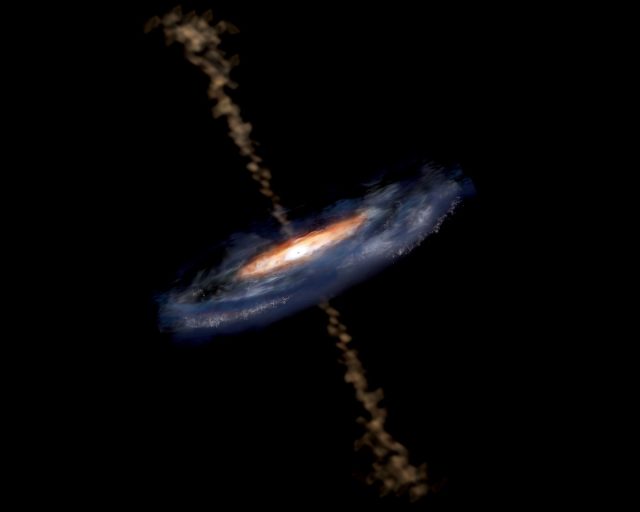Black holes? They're all the same
Ars Technica » Scientific Method 2012-12-16

Recently, we discussed the discovery of a black hole in a neighboring galaxy. It appears to be swallowing matter at a rate that's close to the theoretical limit on this process. This discovery raises the hope that we'll be able to get a clear view of the environment around the black hole, where the inflow of matter leads to the formation of particle jets that expel some of the matter at relativistic speeds. This process is also thought to power quasars, where the jets of supermassive black holes generates some of the brightest objects in the Universe.
But there's a small caveat that should temper astronomers' enthusiasm: we don't know for a fact the same process that powers jets from small black holes can scale up to objects that may weigh billions of times the mass of the Sun. Conveniently, in the same week this discovery was announced, another team of astronomers has provided evidence that all of these jets have similar properties.
Although black holes are happy to swallow most of the matter that comes there way, a bit of it escapes—if by "escapes" we mean "gets shot away from the black hole at nearly the speed of light." These jets of particles are so energetic that, in at least some cases, they're entirely thrown out of the galaxy where the black hole resides. Various models indicate the black hole's intense magnetic field lines power the jets by latching on to charged particles in the matter that is falling in towards the event horizon.
Read 6 remaining paragraphs | Comments